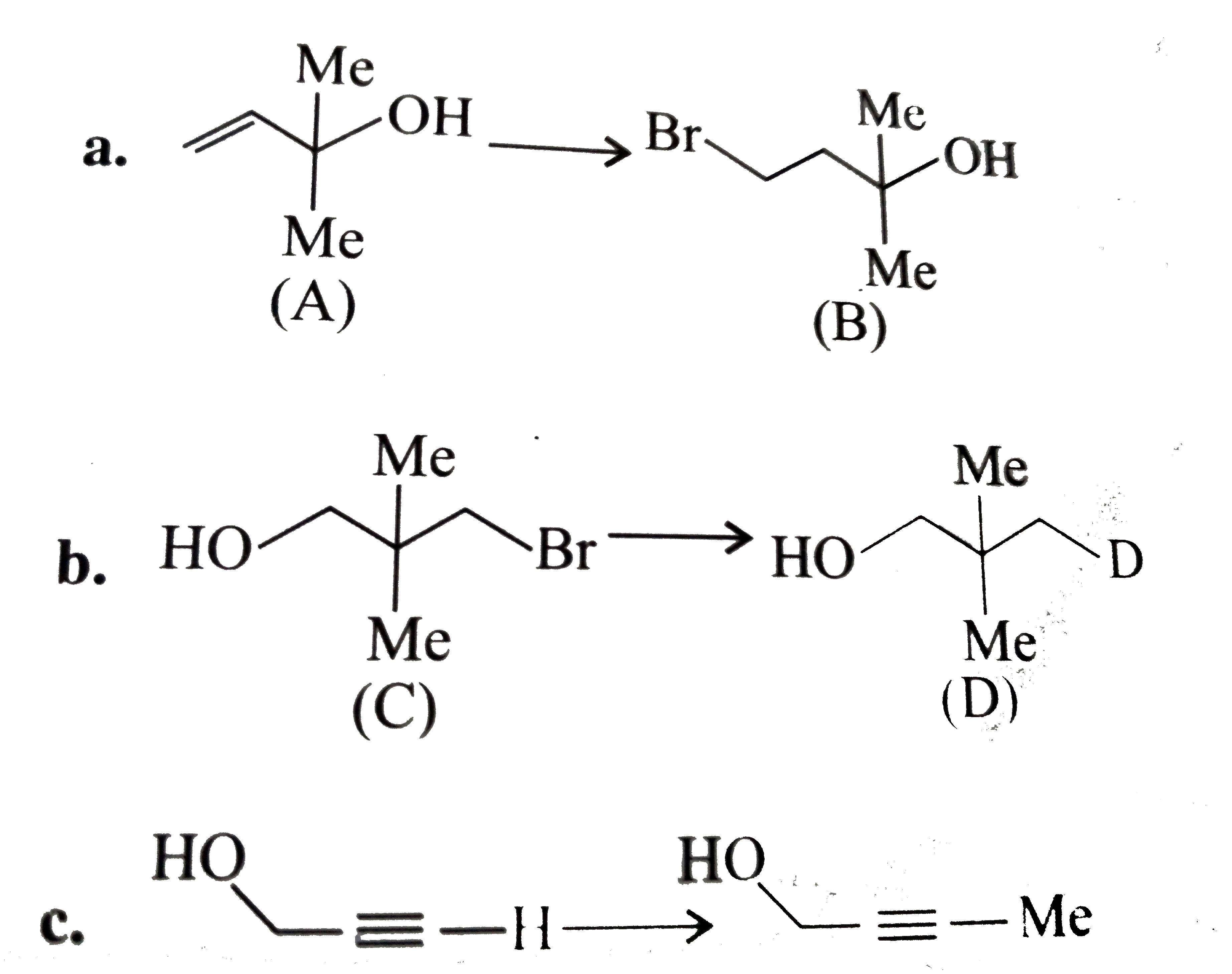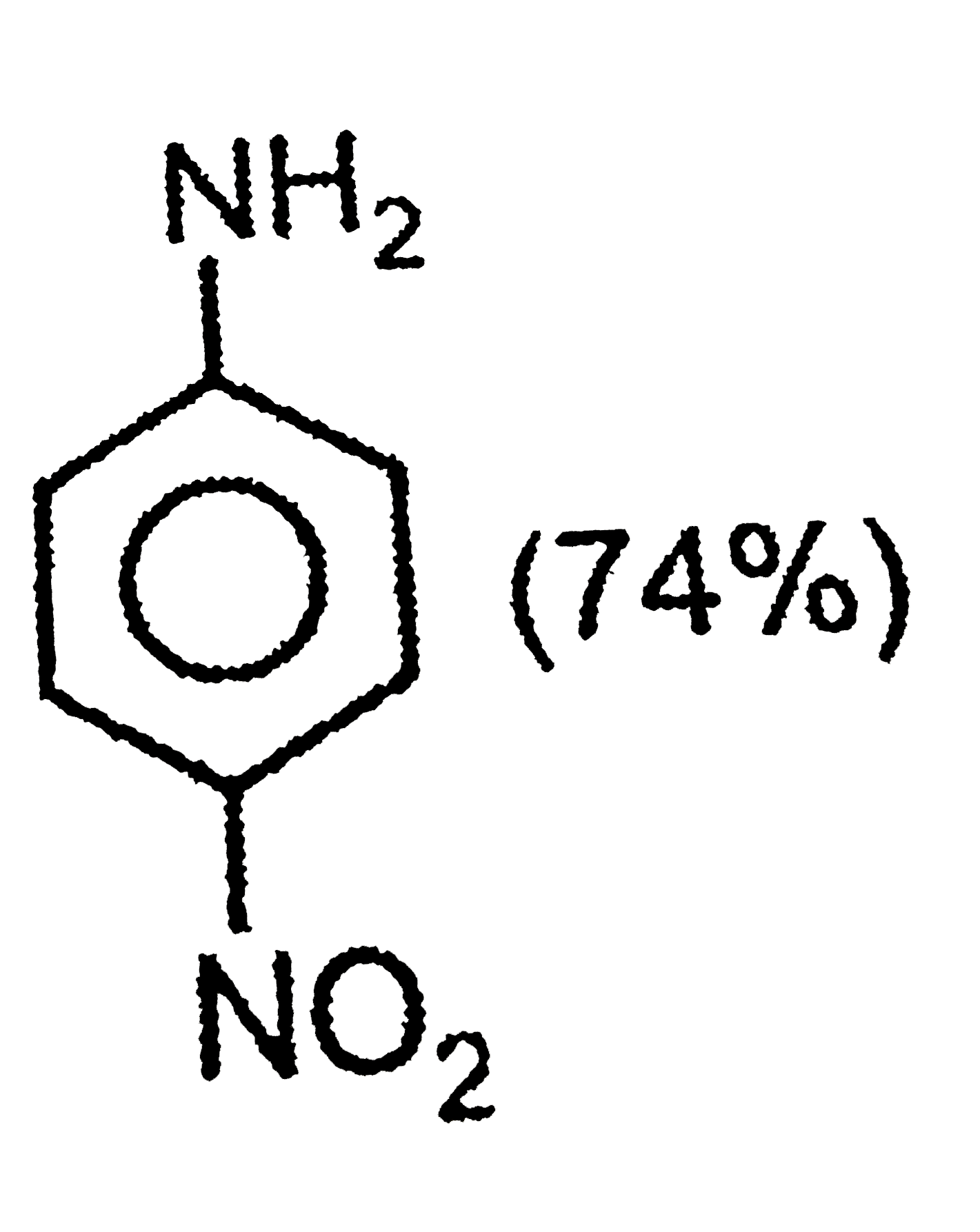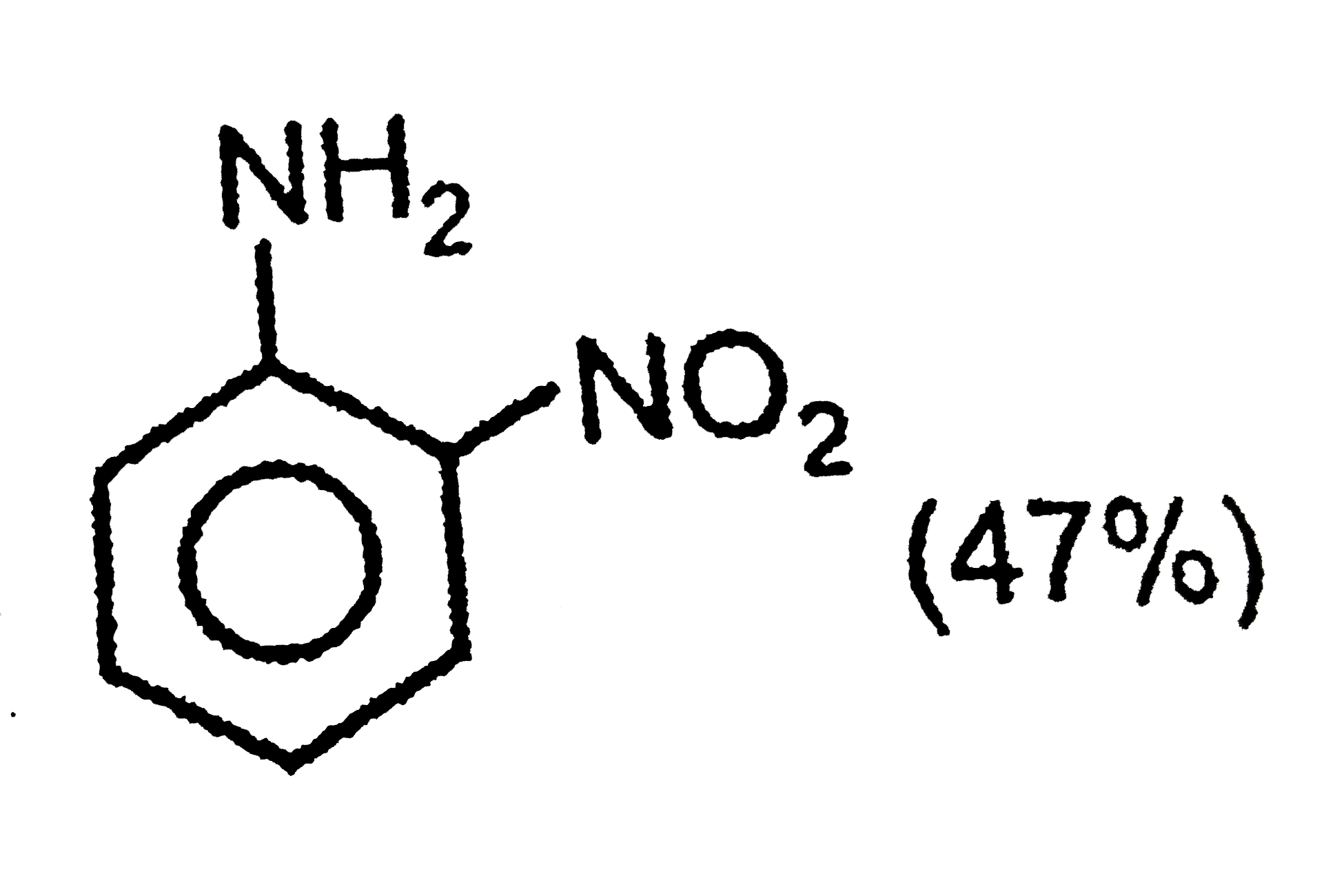The reagent used for protection of amino group during the nitration of aniline is
SOCl2/Pyridine
PCl5
Acetic acid
Acetic anhydride
The correct Answer is:D
To solve the question regarding the reagent used for the protection of the amino group during the nitration of aniline, we can follow these steps:
Step 1: Understanding the Problem
Aniline (C6H5NH2) contains an amino group (-NH2) that is highly activating towards electrophilic substitution reactions, such as nitration. However, this high reactivity can lead to unwanted oxidative products if not controlled.
Hint: Identify the nature of the amino group and its effects on reactivity.
Step 2: Protecting the Amino Group
To prevent the amino group from reacting during the nitration process, we need to protect it. One common method of protection involves converting the amino group into an acetamide group by reacting it with an acid derivative.
Hint: Consider common acid derivatives that can react with amino groups.
Step 3: Choosing the Right Reagent
In this case, acetic anhydride (CH3C(O)O)2 is a suitable reagent for this purpose. When aniline reacts with acetic anhydride, it forms N-acetylaniline (C6H5NHCOCH3), which is less reactive than aniline itself.
Hint: Think about how the structure of the product affects its reactivity.
Step 4: Performing Nitration
Once the amino group is protected as N-acetylaniline, the nitration can proceed without the risk of oxidative products. The nitration will predominantly occur at the ortho position due to the directing effects of the acetyl group.
Hint: Remember the positions where nitration is likely to occur based on substituent effects.
Step 5: Hydrolysis to Regenerate Aniline
After the nitration is complete, the final step involves hydrolyzing the N-acetylaniline back to aniline using an acidic condition (H3O+). This step regenerates the original amino group.
Hint: Consider the conditions required to revert the protecting group.
Final Answer
The reagent used for the protection of the amino group during the nitration of aniline is acetic anhydride.
Summary of Steps
1. Identify the reactivity of the amino group in aniline.
2. Choose a suitable protecting reagent (acetic anhydride).
3. Form the less reactive N-acetylaniline.
4. Carry out the nitration reaction.
5. Hydrolyze to regenerate aniline.
Aniline (C6H5NH2) contains an amino group (-NH2) that is highly activating towards electrophilic substitution reactions, such as nitration. However, this high reactivity can lead to unwanted oxidative products if not controlled.
To prevent the amino group from reacting during the nitration process, we need to protect it. One common method of protection involves converting the amino group into an acetamide group by reacting it with an acid derivative.
In this case, acetic anhydride (CH3C(O)O)2 is a suitable reagent for this purpose. When aniline reacts with acetic anhydride, it forms N-acetylaniline (C6H5NHCOCH3), which is less reactive than aniline itself.
Once the amino group is protected as N-acetylaniline, the nitration can proceed without the risk of oxidative products. The nitration will predominantly occur at the ortho position due to the directing effects of the acetyl group.
After the nitration is complete, the final step involves hydrolyzing the N-acetylaniline back to aniline using an acidic condition (H3O+). This step regenerates the original amino group.
The reagent used for the protection of the amino group during the nitration of aniline is acetic anhydride.
1. Identify the reactivity of the amino group in aniline.
2. Choose a suitable protecting reagent (acetic anhydride).
3. Form the less reactive N-acetylaniline.
4. Carry out the nitration reaction.
5. Hydrolyze to regenerate aniline.
Topper's Solved these Questions
- BOOK - ERRORLESS CHAPTER - CARBOXYLIC ACID AND THEIR DERIVATIVESEXERCISE - Critical Thinking Objective Question9videos
CARBOXYLIC ACID AND THEIR DERIVATIVES
- BOOK - ERRORLESS CHAPTER - CARBOXYLIC ACID AND THEIR DERIVATIVESEXERCISE - Jee Section (Only one Choice correct Answer)30videos
CARBOXYLIC ACID AND THEIR DERIVATIVES
- BOOK - ERRORLESS CHAPTER - CARBOXYLIC ACID AND THEIR DERIVATIVESEXERCISE - Ordinary Thinking Objective Questions (Properties of Carboxylic Acids and Their Derivatives)156videos
CARBOXYLIC ACID AND THEIR DERIVATIVES
- BOOK - ERRORLESS CHAPTER - BIOMOLECULES AND POLYMEREXERCISE - Jee section (Jee (Advanced 2018)) (More than one choice correct answer)1videos
BIOMOLECULES AND POLYMER
- BOOK - ERRORLESS CHAPTER - CHEMICAL BONDING EXERCISE - JEE Section (Jee (advanced ) 2018)1videos
CHEMICAL BONDING
Similar Questions
Which is the best method for the protection of (OH) group during the following synthesis ? Explain.
a. View Solution
View SolutionChemical Properties OF Amines, Aniline || Freidel craft reaction || Protection OF amino group || Nitration || Halogenation || Sulphonation || Reaction with diazonium salts || Reaction with benzaldehyde || Reaction with beta - naphthol
View Solution
Knowledge Check
- Question 1 - Select One
The correct option regarding the percentage of product obtained during nitration of aniline at 288K is
A B
B C
C D
D
- Question 2 - Select One
Nitration of aniline is achieved by
Adirect nitration with nitrating mixture under refluxBusing fuming HNO3Cacetylation followed by nitration and subsequent hydrolysisDKNO3 and conc HNO3 - Question 3 - Select One
The nitration (using nitration mixture) of aniline gives:
Ap-nitroanilineBo-nitroanilineCm-nitroanilineDall of these
Which of the following is used for detection of amino acids during thin layer chromatography ?
View SolutionWhich reagent is useful for protecting an aldehyde functional group in synthesis involving strong bases and nucleophiles ?
View SolutionStatement 1: Nitration of aniline is generally performed by protecting amino group through acetylation and
Statement 2: Acetylation decreases the electron density in aromatic ring.View SolutionAniline on nitration gives
View SolutionAniline on nitration gives
View Solution

